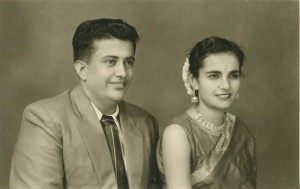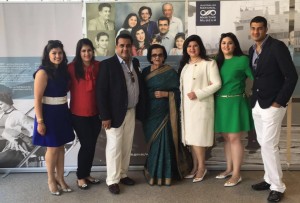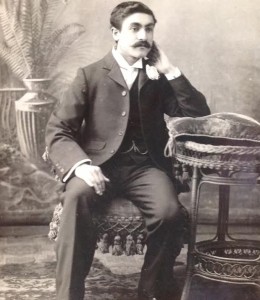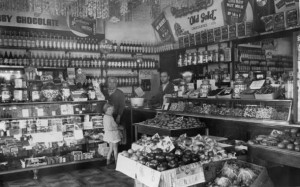Maritime Museum welcomes migrant stories
By Manju Mittal
As a migrant, a writer and a reader I share the history and stories of other migrants, perhaps, to explore my own feelings about migration.
Australia is a multicultural nation with 44 per cent of its population born overseas or with a parent born outside Australia. The National Maritime Museum’s Welcome Wall celebrates this diversity with unveiling ceremonies held twice a year.
The National Maritime Museum considers the arrival of waves of migrants on shores to be one of the major themes in Australia’s maritime history. It has built the Welcome Wall on its northern boundary, facing Darling Harbour and Pyrmont Bay where many new settlers arrived.
The 357 new names brought the total number of names on the wall to 27411. Of these 7533 are from England, 3354 from Italy, 1614 from The Netherlands, 1611 from Germany, 1533 from Scotland, 1306 from Ireland and 907 from Greece. In all, more than 200 countries are represented.
The museum’s award winning digital projection, Waves of Migration, recognised early migrant history on this year’s Australia Day on 26 January.
Earlier, on 6 December 2015, around 700 people attended a special ceremony at the Maritime Museum when 357 new names were unveiled on the museum’s migrant Welcome Wall. Australians were invited to pay tribute to migrant families and friends by having their names inscribed on the bronze panelled wall so they could reflect on the new life Down Under by adding their own names.
The special guest at the Australia Day ceremony was Dr Sev Ozdowski from the Australian Multicultural Council who reflected on his own family’s migrant history and the importance of multiculturalism in Australia.
Dr Ozdowski was joined by two migrant speakers who have placed names on the wall. Anne Versitano honoured her grandparents who migrated from Italy in the late 1800s and Julie O ”˜Hara shared her inspiring story of her family’s escape from Vietnam in 1977.
Meet here a couple of the migrants who have become some of Australia’s most successful business people. They arrived with nothing and now they are a name to reckon with in the country.
I met Sunil Lal and his family at his residence ”˜Madan Vilas’ in Strathfield, Sydney. I felt welcomed and comfortable around the family. It was quite inspiring to hear their experiences and to feel the bond thus developed.
It is the story of Indian medical practitioner Dr. Madan Lal Chhabra who arrived in Sydney in 1968.
March 1962, Burma: modern day Myanmar is taken over by the army who now control people and their possessions. In October 1968, a young 36- year-old Indian medical practitioner receives the opportunity to flee the army coup, arriving in Australia with little else other than the clothes he is wearing. He has only one goal – to safely get his wife, six-year-old son and his younger siblings across to Australia for a better life.
Dr. Madan Lal Chhabra first arrived in Newtown, Sydney with only ten dollars and without his family. He was provided accommodation for a few days by a Burmese family. He secured a job as a doctor at the Liverpool hospital within a week of his arrival and so began his journey in the land of opportunity.
In December 1988 he was joined by his wife and only child, Sunil. At first, life was tough and with a gross income of $52 per week, he had to pay rent, feed his family and send money back home to support his siblings.
Dr Max Lal, as he fondly became known, worked hard in 72-hour shifts, whilst wife Kamla obtained a job in sewing and later as a teacher at the Kingsgrove Public School once Sunil commenced year 1 at the Croydon Park Public in 1969. The family of three rented one room at the rear of a house in Croydon Park and that became their modest home.
Shortly thereafter, Dr. Lal became medical superintendent and transferred to western suburbs hospital where the family was also provided living quarters. By mid 1970 the family extended, as he was joined by his father and two younger brothers. For a short period of time the family resided in Wollongong to accommodate all six members before purchasing their first home in Burwood.
The following year saw Dr. Lal open his first surgery in Punchbowl and by 1972 he had opened his second surgery in Belmore.
With another four siblings in India, Burma and Canada, he gradually worked hard and supported their sponsorships to commence a new life in Sydney. By 1973, all siblings had arrived in Australia and living under one roof before starting their own careers and lives. Today, they are all well settled professionals and successful business people in their own right.
Several years of hard work and sacrifice was slowly paying off. In 1987, Sunil married Shikha, his love and strength. In 1988, Sunil commenced his career as a lawyer with a leading national legal firm in Sydney. He was quickly recognised with special skills and won a solid corporate client following, to become an equity partner by the early 1990’s. By this time, Sunil and Shikha had four children in Divya, Radhika, Neha and Rahul.
Both father and son had also embarked on building a diversified property portfolio by the 1990’s whilst maintaining their professional careers. The family is now involved in developing houses, apartments and entering aged care area to assist the elderly.
Sunil Lal, Kamla Lal Shika Lal wih children Divya, Radhika, Neha and Rahul
The family is heavily involved in philanthropy; Shikha was appointed Director of Philanthropy for Kaden Boriss and the firm donated 2 per cent of their fees from the business to various charities in Australia and abroad. She has been instrumental in raising funds for children’s health, education and those suffering from depression and abuse to name a few.
Sunil also has a passion for business relations between Australia and India and now serves on the Board of NSW Chamber of Australia-India Bilateral Trade which was co-founded by him.
Another migrant family’s success story belongs to Bartolomeo Pittorino, who was born in Italy and moved to Australia in 1897. I got an opportunity to meet his granddaughter Carolyn Pittorino in Sydney and she shared her insights into his journey.
Carolyn Pittorino with dad and young Bartolomeo
“I am so proud of him. At the age of 14 he was a mere boy, a child, who was expected to work and earn a living like an adult and separated from his loved ones back home for at least a decade or so,” Carolyn said.
It was 1890 and the once verdant vineyards of the island of Salina, Italy had been devastated by disease. The tiny volcanic isle in the Aeolian Archipelago had for centuries been famous for the production and export of Malvasia, a sweet wine popular throughout Europe. The disease ravaged grape crops an annual 2.6 million gallons of wine reduced to mere drops. Over 90 per cent of Salina’s vineyards were decimated.
Faced with destitution, many families looked to the seas and beyond in the hope of a better life for their children. It was with this hope that in 1897 young Bartolomeo Pittorino, eldest son of five children, set sail on a three month journey from Leni, Salina, to Australia when he was just 15.
He sailed from Salina to Naples and on to London, where he boarded the steamship Orotava, arriving in Sydney on 10 December 10, 1897. A year later he was followed by his 14-year-old brother Giuseppe who arrived aboard the steamship Ormuz on October 29, 1898.
As a small, penniless boy from Salina who spoke no English, Giuseppe started out working for his uncle who owned a fruit shop in Northern Sydney. He worked eighteen hours a day, slept on a stretcher and had a wooden box as a dressing table.
Giuseppe and Anna with children
After working for first seven weeks, he was paid 21 shillings. However, that same night he had his sovereign stolen. Despite this misfortune, and one shilling to his name, he continued to work hard and save in order to realise his dream of opening up his own business and owning his own home – the Australian dream which was unachievable in his homeland.
A mere four years later in 1902 and as a testament to their determination, Giuseppe and Bartolomeo opened their first fruit shop in Marrickville. The brothers worked hard and prospered very quickly. They purchased properties and built shops from Marrickville to Ramsgate, eventually building a large fruit shop on Rocky Point Road. This small empire grew from the tiny seed in the mind of a boy who at 13 would walk to visit his brother from North Sydney to Bondi Beach entirely barefoot so as not to wear out the soles of his one and only pair of work shoes.
When Giuseppe was older he sailed back to the island of Salina and met Anna Costa. They married in 1920 in Valdi Chiesa, Italy, where Anna lived with her family. Their first child Irene was born one year later. She was, unfortunately, a sickly baby and so when Anna conceived for the second time they made the decision to sail to Australia so that their second child could be born with good medical assistance.
The medical help on Salina was very basic. Sadly, they had to leave behind baby Irene with her grandparents as she was not well enough to travel, vowing to return for her when she was stronger.
Giuseppe and Anna arrived in Sydney in 1921 aboard Orient Liner. They settled in Sydney and had three more children – Anne, Mary and Anthony before returning to Salina in 1927 to collect Irene, who was already six-years-old and had become very attached to her Costa grandparents.
It was unimaginably hard for Irene to leave the island of Salina and the only family she had ever known, to join her parents and siblings. Irene spoke only Italian and her siblings, from whom she had been estranged for six years, spoke only English, and secondly the term “multiculturalism” didn’t exist in Australia in those days.
Giuseppe’s business prowess continued to flourish. He opened a business in Woollahra and in 1928 the brothers built a mixed business shop and milk bar in Kogarah. In 1933, a fifth child Agnes was born when the family became Australian citizens and lived a comfortable and relatively peaceful life in Arncliffe.
The only time life became fraught with tension and conflict was during WWII when they were perceived as Italian. Being well liked in the community and wearing his RSL badge proudly kept Giuseppe and his family safe at that time, save for a single rock through his shop window and a weapon’s search through his house by the police.
The prosperous and contented Giuseppe and Anna from the island of Salina, raised a family and enjoyed the freedom, fortune and opportunity that Australia offered them. They shared their home with Bartolomeo as he and Giuseppe were inseparable. To this day, the facade of 294 Rocky Point Rd, Ramsgate bears the “Pittorino Bros 1929” sign.
Anna died on April 9, 1955; Giuseppe died on June 23, 1963 and Bartolomeo passed away on December 29, 1963. Their legacy lives on through their children, grandchildren and great grandchildren who share the same beliefs in being self-reliant and hard working to achieve goals, all for the benefit and unconditional love of family.
We are sure many such migrant stories of hardships abound in Australia. Two above stories represent the migrant wave which continues till today. Indian migrants top the list in the skilled migrant category, thus making Australia the most diverse, most vibrant and multiculturally unique nation one is rightly proud of.
Short URL: https://indiandownunder.com.au/?p=6406







